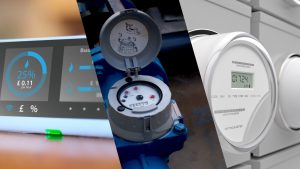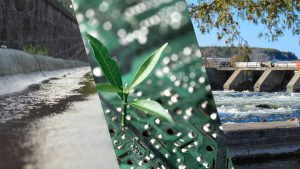An essential aspect of wastewater treatment is to ensure that eutrophication, which refers to the emergence of harmful algae blooms and bacteria, is prevented from growing in freshwater bodies. Eutrophication occurs when there is a high number of nutrients present in water. This is why nutrient removal is an essential aspect of wastewater treatment. Currently, many methods are implemented by wastewater managers to remove or reduce nutrient levels. This article will describe some of the most popular methods used.
Six Techniques Used to Removed Nutrients in Wastewater Treatment
The primary nutrients that lead to algal growth are nitrogen and phosphorus. Hence, various projects have been implemented in different counties to ascertain a feasible solution that reduces or eliminates such nutrients from overgrowing in freshwater bodies. Here are six of them:
Aquatic Plant Biomass Harvests
A popular technique utilised in America, aquatic plant biomass harvests are set to remove nutrients. Aquatic biomass consists of a range of micro and macroalgae aquatic plants. By harvesting aquatic plants after the growth period, nutrients in the water are absorbed and taken away. The science behind this is that aquatic plants assimilate and absorb nutrients from the water and sediment during the photosynthesis stage for their own growth. The assimilation rate is correlated with the plant growth rate and nutrient level in the water body. This low-cost method has proven to be effective and simple for removing contaminants from water bodies. Multiple ways are used under this technique for wastewater treatment. This includes Managed Aquatic Plant Systems (MAPS), artificial floating meadows, floating wetlands and floating plant treatment systems. A research study notes that the MAPS project in Florida to remove 1,300 kilograms of nitrogen and 330kg of phosphorus was successful.
Moving Bed Biofilm Reactor (MBBR) Technology
MBBR is a merge of the conventional activated sludge process and biofilm media. This is not a new technology and was first developed in the 1980s by Norwegian researchers. It is a biological process introduced to eliminate the weaknesses of other biological wastewater treatment methods at the time. It is mainly used in municipal and industrial wastewater application treatments. It uses lower levels of energy to separate organic substances and remove nutrients. It is powered by a sludge aeration system whereby while the sludge is collected into plastic carriers covered in biofilm to decompose waste, the surface area of the carrier optimises the contact of air and bacteria. Benefits of MBBR technology include the possibility to save space, can be maintained to handle the high volume of load, is not affected by toxic shock, and does not require the sludge to be recycled. MBBR is cost-effective, does not require chemicals, and is easy to operate.
Integrated Fixed-Film Activated Sludge (IFAS)
IFAS is a modern version of the traditional activated sludge technologies used for wastewater treatment. It combines an attached growth media to an activated sludge tank, effectively facilitating biomass growth and strengthening the wastewater treatment process. It combines aerobic, anaerobic and anoxic zones to increase the sludge retention time, which helps the overall nitrification compared to other suspended growth systems. While this system is efficient, many notes this is not the most cost-effective option. Hence, those implementing it may have to incur higher costs for its construction and operation. Since biofilm carriers can either entail dispersed media or fixed media, two techniques regarded as highly advanced for wastewater treatment plants, to implement such a system, exclusive expert knowledge is required not just to design and build it, but skilled labourers are needed to make it a success. In other words, the success of IFAS depends on the team of humans that will be controlling it.
Membrane Bioreactor (MBR) Systems
MBR integrates a perm-selective or semi-permeable membrane with a biological process, such as activated sludge, to provide advanced organic and suspended solids removals. Here, membranes are submerged in an aerated biological reactor. As membranes in this system have porosities between 0.035 microns to 0.4 microns, it uses microfiltration or ultrafiltration membranes and a suspended growth bioreactor to treat wastewater systems. The membrane filters out any solids developed during the biological process resulting in pathogen-free wastewater. This makes it similar but also different to an MBBR. For instance, MBR is costlier as it requires enormous maintenance and operational costs. It, moreover, requires a high level of screening to ensure nutrients are removed. It, moreover, requires chemicals and is quite challenging to operate. It uses a recirculation pump and air-scouring blowers. On a positive note, however, MBR is better at shifting complex or toxic substances, and its water quality is guaranteed more. In other words, it assures nutrients are removed.
Sequencing Batch Reactors (SBR)
Also referred to as sequential batch reactors, SBR uses multiple industrial processing tanks to treat wastewater. It uses an anaerobic digester or mechanical biological treatment facilities in batches for this process. Hence, tanks in the SBR system are filled for a certain time and then operated as a batch reactor. The SBR process includes five stages: filling, reacting, settling, drawing, and staying idle. The main components an SBR encompasses include a reactor basin, a water sludge draw-off mechanism, aeration equipment, an effluent decanter and a process control system. Generally, a SBR has around four tanks. On the one hand, a tank would flow through a system whereby wastewater enters from one side, and the treatment is flown out. On the other hand, another tank, in the meantime, is aerating and filling. Prior to using the tanks, it is common practice to send the wastewater to preliminary treatment, whereby grit removal is carried out.
Modified Ludzack-Ettinger Process (MLE)
In the traditional Ludzack-Ettinger process, the nitrified mixed liquor does not return to the pre-anoxic zone to remove nutrients. Hence, this modern wastewater treatment process uses intermittent aeration to obliterate nitrate and phosphorus. It, in other words, uses an anoxic zone upstream of the aerobic zone. The treatment uses nitrate produced in the aeration zone as a source of oxygen for bacteria to consume in the event of the breakdown of raw wastewater in the anoxic pan. This treatment uses a pre-anoxic tank to mix wastewater, the reclaimed sludge from a clarifier, and the nitrate-laden mixed liquor pumped from the outlet end of the aeration tanks. The facultative bacteria that result help the wastewater treatment undergo denitrification. One noteworthy feature of this treatment plan is to build it in a large landmass, as the number of aeration tanks and basis for the different zones could take up a lot of space.
Nutrient Removal is a Very Scientific and Technical Process
It is confusing to understand which nutrient removal method is the most effective. What scientific processors is the most suitable or which is more feasible is a question wastewater treatment centres often find themselves asking. Hence, nutrient removal becomes a very scientific and technical process which requires expert assistance. One aspect, however, that wastewater asset managers can control is the life cycle of assets used to ensure nutrient removal occurs. Invest in a powerful asset maintenance tool to ensure your wastewater treatment works effectively.







